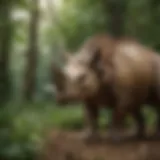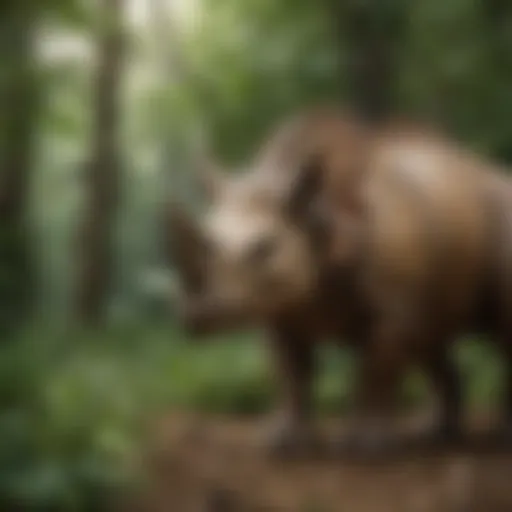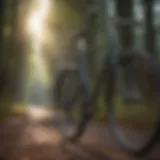The Art of Claymation Videos: An In-Depth Exploration
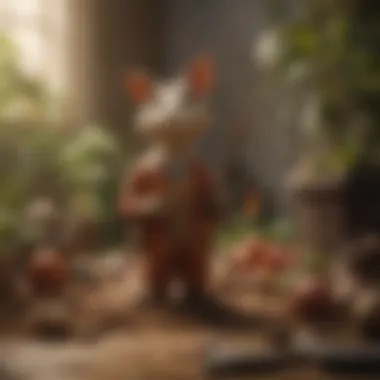

Nature Topic Overview
Claymation is quite an intriguing form of animation, combining imagination and craftsmanship to tell stories through handcrafted figures made from clay. This art form has been around for quite some time, captivating audiences with its whimsical characters and expressive narratives. At its core, claymation involves building figures from clay, manipulating them, and photographing them frame by frame, creating the illusion of motion. This technique not only brings characters to life but also offers an engaging way for young minds to explore creativity and storytelling.
In this article, we will examine the history of claymation, explore various techniques employed by artists, and shine a light on its significance in both entertainment and education. As you dive into the world of claymation, you’ll discover how this unique medium connected with viewers of all ages and its educational potential in helping children express themselves through art and narrative.
Fun Facts and Trivia
- Did you know that the first claymation film dates back to 1897? Titled "The Humpty Dumpty Circus," it showcased the early potential of stop-motion animation.
- Wallace and Gromit, created by Aardman Animations, are perhaps the most famous claymation characters, delighting audiences since their debut in the short film "A Grand Day Out" in 1989.
- Claymation has been used in various TV commercials, illustrating how the technique can captivate even in short snippets.
Visuals and Interactive Elements
To enhance your understanding, consider watching some claymation short films. You could also try your hand at creating a mini clay character. Experiment by molding different shapes and recording short animations with a smartphone camera.
DIY Nature Activities
Creating your own claymation videos can be a rewarding and fun experience! Here’s an easy way to start:
Step-by-step Guide for Beginners
- Gather Supplies:
- Create Your Character:
- Set the Scene:
- Take Photos:
- Edit Your Video:
- Colored clay
- A simple background (like a piece of cardboard)
- A smartphone or digital camera
- Optional: A tripod to hold the camera steady
- Mold shapes for your character and any props you need. Make sure to have fun with it!
- Place your characters on the background and ensure it’s well-lit.
- Move the character slightly and snap a photo. Repeat this process, making slight adjustments each time.
- You can use simple editing software or apps to stitch your pictures together and create a fun stop-motion video.
By engaging in these activities, children can learn to express their stories while developing their creativity and fine motor skills. Not only will they have a blast, but they will also gain an appreciation for the art of claymation!
"Creating clay figures and animating them can just open a door to a world of imagination and possibility."
This might also be a perfect opportunity for parents and teachers to participate. Making clay figures together bridges creativity with hands-on learning while you share stories that inspire learning and exploring.
In the upcoming sections, we will delve deeper into the history and techniques of claymation and how it continues to impact the animation landscape and education.
Foreword to Claymation
The realm of claymation is a wondrous blend of artistry and storytelling that has intrigued countless individuals across generations. This fascinating animation technique employs malleable clay figures, bringing them to life frame by frame. The allure of claymation lies not only in its whimsical characters but also in the meticulous craftsmanship behind each scene.
Understanding the concept of claymation is essential, as it sets the groundwork for appreciating its cultural significance. Animation, in general, provides a unique channel for creativity and expression, while claymation specifically adds a tangible, tactile element that resonates well with audiences. Parents and educators often marvel at how such a form of art inspires children, igniting their imaginations and encouraging a hands-on approach to storytelling. By using clay, young creators can physically mold their ideas into characters that leap from their minds to the screen.
Definition and Overview
Claymation is a type of stop-motion animation that incorporates clay figures. In its most straightforward terms, the process involves creating a series of images, each one slightly different from the last, to produce the illusion of movement. Clay figures are painstakingly shaped and positioned in a variety of poses. After capturing each frame, animators piece together the sequence, resulting in a cohesive film. This method enables animators to utilize their artistic skills to breathe life into inanimate objects, effectively capturing nuances that computer-generated imagery often lacks.
The appeal of claymation is broad, transcending age groups. Children are not just drawn to the colorful characters; they are also motivated to create their own animations, cultivating a desire to explore their artistic talent. The physical manipulation of clay helps develop fine motor skills, while the narrative structure of animated films teaches the fundamentals of storytelling.
Importance in Animation
The role of claymation within the larger field of animation cannot be underestimated. It serves as a reminder of the basics of animation and the importance of creativity grounded in traditional techniques. Unlike digital animation, which can sometimes feel detached, claymation offers a warmth and authenticity. These handcrafted characters evoke a sense of nostalgia, appealing to both young viewers and their parents who grew up watching iconic claymation works.
Moreover, the unique texture and flexibility of clay allow for greater expression, enhancing the characters’ emotions. The slow, labor-intensive work involved invites a level of patience and commitment that not only enriches the process but also fosters resilience. In a world increasingly dominated by digital media, claymation holds a valuable place, encouraging collaboration among young artists and inviting them to think critically about their narratives and execution.
"Claymation stands out because it breathes life into the ordinary through imagination, hard work, and creativity."
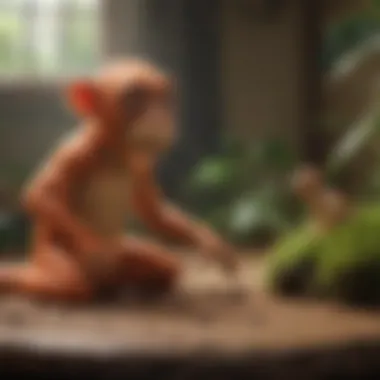

Historical Context
Understanding the historical context of claymation offers a lens through which to appreciate its artistic evolution and the ingenuity behind its creation. This section uncovers the roots of claymation, highlighting how it emerged and developed to become a beloved genre in the animation world. Acknowledging where claymation started helps cultivate a deeper appreciation in both young audiences and their guardians, as it reveals the creativity and hard work that set the stage for contemporary works.
Origins of Claymation
Claymation began its journey in the late 19th century, when early filmmakers experimented with stop-motion animation. The earliest known instance of using clay in animation occurred in 1897 when J. Stuart Blackton created "The Humpty Dumpty Circus." This piece utilized clay figures alongside live-action footage, capturing the public’s imagination. In those days, artists crafted each frame painstakingly, shooting only a few seconds of footage over hours of work. The labor-intensive nature of this craft reflects a dedication to the art that remains foundational to claymation today.
Pioneers in the Field
As the tapestry of claymation grew, several pioneers emerged, leaving their mark on the genre. One such figure is Will Vinton, who founded Vinton Studios in the 1970s. Vinton brought clay to the forefront of television with characters like the famous California Raisins. These characters popularized claymation commercials, showcasing its potential for storytelling and commercial appeal. Another notable pioneer is Nick Park, who created the iconic Wallace and Gromit series. Park’s work emphasizes character-driven narratives and charming visual storytelling, proving claymation can convey emotionally resonant tales while being visually delightful.
Evolution Over the Decades
Claymation has transformed dramatically since its inception. In the early days, filmmakers relied on physical sets and practical effects, which required immense skill and patience. However, as technology advanced, tools such as digital photography and editing software emerged, revolutionizing the creation process. This evolution allows for smoother animations and more intricate character designs. Notably, the release of films like "The Nightmare Before Christmas" in 1993 showcased the potential of blending traditional clay techniques with cutting-edge technology, captivating audiences across generations.
"The claymation process is not only about the final product but the joy of creation and experimentation that each animator enjoys."
In summary, the historical context of claymation illuminates its rich heritage and the artists who shaped it. From its humble beginnings to its place in modern cinema, claymation reflects a spirit of innovation and artistry. This evolution not only enriches the genre's narrative but also engages young minds, prompting them to explore their creativity in animation.
Techniques and Tools
Understanding the techniques and tools essential in the world of claymation is a significant part of grasping its artistry. Claymation, being an intricate blend of craftsmanship and creativity, demands not only dedication but also a good grasp of how tools and techniques mesh together to create vibrant and engaging narratives. From molding clay to setting up complex scenes, the materials and the methods used are what ultimately breathe life into the characters.
Basic Materials Used
Wood for the basis structure, flexible screws, and plasticine or modeling clay are the cornerstones here. Among these, plasticine stands out due to its malleability. Unlike standard clay, it doesn't dry out, allowing animators to revise models as needed. Using reusable materials can save both time and costs during long production hours. Another common material is armatures, which are often made of metal wire. These skeleton-like frames ensure that characters hold their shape during the filming process, maintaining consistency and stability.
The Animation Process
The animation process in claymation involves meticulously capturing every small motion of characters. Creating a fluid motion is like piecing together a mosaic; it requires careful consideration at every step—in storyboarding, set design, and character creation. Each element needs to work harmoniously to produce a cohesive story.
Storyboarding
Storyboarding serves as the backbone for any successful claymation project. By sketching out scenes and ideas, animators can visualize the trajectory of the narrative before filming begins. This practice is a key characteristic of professional animation. Having a well-thought-out storyboard allows for a clearer path, reducing the risk of getting lost in the details as production rolls on. The wonderful aspect of storyboarding is the flexibility it offers; changes can easily be made before any precious clay is molded or shots are captured. This aspect minimizes the chances of reworking entire segments of animation later on, saving time and effort.
Set Design
Setting the scene is another crucial step in claymation. Set design contributes greatly to the atmosphere of the animation and is often what captures the viewer's eye first. Whether it’s a whimsical garden or an intricate cityscape, the design serves to immerse the audience in the story's world. A remarkable feature of set design is that the settings can be adjusted and tweaked based on the storyline or character needs. While it does require a significant investment of time and resources, the end result—a richly detailed environment—can enhance the overall narrative and engage the audience more deeply.
Character Creation
Character creation is where the heart of claymation lies. This isn’t simply about shaping figures; it's about instilling personality, emotions, and even quirks into each character. The characters are the vessels through which stories unfold, and thus their design can profoundly influence viewers’ connections to the narrative. One unique feature of character creation in claymation is that animators can adjust their structuring as production proceeds, allowing for ongoing character development. The laborious nature of this task, however, often requires patience since even a slight misalignment can disrupt the entire animation flow. Each character must align perfectly to maintain narrative emotion and authenticity.
Technology and Software
The landscape of claymation has evolved decidedly with the introduction of technology. Modern animators leverage specialized software to enhance their workflow. Programs like Stop Motion Studio or Dragonframe allow for superior control and editing capabilities, making it easier to visualize the final product while offering the chance for precise adjustments. These tools form a bridge between the traditional craftsmanship of claymation and the digital efficiencies that can streamline production time.
By understanding the techniques and tools employed in claymation, both aspiring animators and interested parties can appreciate the intricate work that goes into crafting these captivating visuals.
Case Studies of Notable Claymation Works
Exploring notable claymation works is key to understanding its impact and evolution in animation. These case studies showcase how innovative storytelling blends with meticulous craftsmanship, sparking inspiration for aspiring animators. They demonstrate not just the technical prowess involved, but also how claymation can evoke emotions and influence cultural conversations.
Wallace and Gromit
Wallace and Gromit is perhaps one of the most renowned claymation series, created by Nick Park and produced by Aardman Animations. The charm of the characters—Wallace, a cheese-loving inventor, and his clever dog Gromit—has captivated audiences worldwide. These tales present a mix of humor and adventure, often involving inventive contraptions and mischief.
This series is significant not just for its engaging storylines but also for its unique aesthetic and character design. The characters are infused with distinct personalities through their clay forms, and the attention to detail in facial expressions is extraordinary. Wallace and Gromit shows that clay can be more than just a medium; it serves as a storytelling tool that allows for a deep emotional connection with viewers.
- Key highlights of Wallace and Gromit:
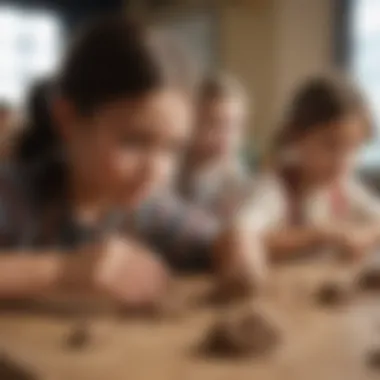

- Humor and Adventure: The juxtaposition of Wallace's quirky inventions against Gromit's silent but expressive personality pulls viewers into their world.
- Cultural Impact: With multiple short films and a feature-length movie, their adventures have earned numerous awards, even an Academy Award for Best Animated Short Film.
- Educational Aspects: The series cleverly incorporates themes of friendship, creativity, and problem solving, making it relatable for children and parents alike.
The Nightmare Before Christmas
The Nightmare Before Christmas, directed by Henry Selick and produced by Tim Burton, presents a darker, more whimsical approach to claymation. This captivating film combines striking visuals with a memorable storyline of Jack Skellington, the Pumpkin King, who stumbles into Christmas Town. It challenges traditional holiday narratives, blending Halloween with Christmas, which adds a unique twist appreciated by younger audiences.
The crossover of these two holidays serves as a metaphor for creativity and the exploration of identity, a crucial theme appealing to children trying to discover themselves. The film's visuals, coupled with its catchy songs, create an immersive experience that invites audiences into its gothic yet enchanting world.
- Important aspects of The Nightmare Before Christmas:
- Distinctive Art Style: The film’s innovative use of set design and character modeling in clay gives it a captivating visual identity.
- Musical Influence: The soundtrack, composed by Danny Elfman, is a significant part of the storytelling, with songs that are engaging and memorable.
- Cult Status: The film has garnered a loyal fanbase, inspiring generations and leading to themed merchandise, further cementing its place in pop culture.
Early Man
Early Man, a feature film by Aardman Animations, takes viewers back to prehistoric times. The story revolves around Dug, a caveman who fights for his tribe's survival against a bronze age enemy. While it carries themes of friendship and acceptance, it also emphasizes creativity and ingenuity, demonstrating how humans adapt to new challenges.
This film showcases the evolution of claymation techniques, combined with humor that entertains both kids and adults. The characters are designed in a way that is visually appealing and reinforces their personalities – Dug’s optimism stands out amid adversity, while his rivals embody arrogance and excess.
- Features of Early Man:
- Visual Appeal: The landscapes and characters are rich, with a vibrant color palette that brings the prehistoric setting to life.
- Humor and Creativity: The film balances humor with lessons on teamwork and ingenuity, making it accessible for younger audiences yet appealing to a broader demographic.
- Technological Evolution: It marks advancements in claymation production, with more sophisticated animation processes that enhance storytelling.
In summary, these notable claymation works highlight the diverse storytelling possibilities inherent in the medium. By blending creativity with technical skills, they not only entertain but also open up conversations about emotion, identity, and cultural narratives, reflecting the power of claymation in the hands of those who dare to innovate.
Educational Benefits of Claymation
Claymation isn’t just a form of animation; it’s a treasure trove of educational possibilities. This artistic medium has unique ways to engage young minds, offering a playful approach to learning that traditional methods often miss. Children aged 5 to 12 can benefit tremendously from claymation, as it stimulates creativity, hones storytelling skills, and even develops technical abilities. Each of these aspects opens doors for imaginative exploration and critical thinking.
Enhancing Creativity
Claymation encourages youngsters to flex their creative muscles by crafting their characters and stories. The process of molding clay into various shapes fosters an engaging atmosphere where kids can experiment without fear of failure. Whether it’s a wobbly figure or a bright blue monster, every creation has its own charm and unique flavor. This hands-on experience allows children to express themselves artistically, making it an exceptional vehicle for creativity.
Benefits of enhancing creativity through claymation include:
- Expressiveness: Children learn to effectively communicate their thoughts and ideas.
- Problem-solving: They encounter challenges while animating—like how to make a character move convincingly—and must think critically to overcome them.
- Artistic Identity: Every piece nurtures a sense of individuality as each child develops their own distinct style.
Teaching Storytelling Skills
Telling stories is at the heart of claymation. When children create their miniature worlds, they’re not just animating figures; they’re narrating tales that are often deeply personal. This act of storytelling enhances their understanding of plot, character development, and pacing. Claymation blends visual arts with the narrative, providing a multidimensional approach to storytelling.
In this context, storytelling skills can be a game changer for kids, enriching their spoken and written communication.
- Structure Understanding: Children learn about story arc, including onset, climax, and conclusion.
- Character Depth: They explore character motivations and relationships, making them more empathetic and aware.
- Confidence Boost: Presenting their creations allows kids to practice public speaking in a fun and supportive environment.
Developing Technical Skills
While creativity and storytelling take center stage in claymation, don’t overlook the technical side of things. Making a claymation video involves a variety of skills that go beyond artistry. Children get hands-on experience with basic animation techniques, which can be crucial in our tech-centric world.
Key technical skills learned through claymation include:
- Animation Basics: Understanding frame rates and how to create the illusion of movement helps grasp fundamental animation principles.
- Editing Skills: Kids learn how to cut and compile footage, gaining early insights into video editing software.
- Teamwork: Often, animating is a group effort, so children develop collaboration skills and learn the value of different perspectives.
"Claymation not only shapes storytelling, but also molds young minds into skilled creators."
In summary, the educational benefits of claymation are vast. From igniting imagination to teaching core technical skills, it provides a rich platform for learning. Young creators who delve into this art form gain a multitude of skills that serve them well academically and in life.
Challenges in Claymation Production
Creating claymation videos is no walk in the park; it involves facing a number of challenges. These are not just minor bumps in the road but significant hurdles that can make or break a project. Understanding these challenges is essential for anyone interested in this medium. It opens a window into the dedication and artistry behind each frame. Knowledge about these challenges helps aspiring animators anticipate what they might encounter, ultimately guiding them through their creative journey.
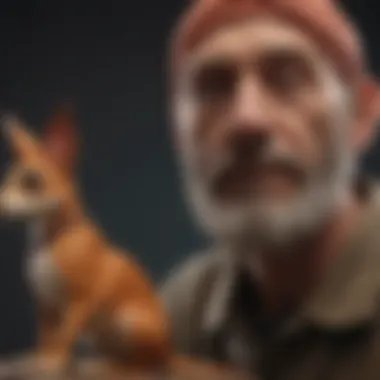

Time-Consuming Nature of the Process
The first hurdle that stands tall is the sheer amount of time it takes to produce claymation videos. Traditional animation is known for being labor-intensive, but claymation takes that to another level. Just consider this: creating a single minute of finished claymation can require hours, even days, of meticulous work. Every minor change in a character’s expression or position requires slight adjustments in the clay figures, and this must be done for each frame during the animation process. The resolution for stop motion is about moving only a few millimeters at a time.
- Why It Matters:
- It develops patience and persistence, key traits for any creator.
- Every moment spent on the details also contributes to higher quality storytelling—well thought out scenes help engage the audience.
The pace can be heavily impacted by various factors: the complexity of the set, character details, and even the animators' experience level. It's like building a model from scratch—if you're off by a fraction, it can ruin the entire structure. The more intricate the design, the longer it takes to get it right, often making producers rethink their approach.
Need for Precision
In the realm of claymation, precision is not just a good practice; it’s an absolute necessity. Any small mistake can ripple through the entire production, causing frustration and additional time spent on fixes. The animators have to treat the clay figures almost like ballet dancers—they must be in perfect harmony, moving fluidly from one frame to the next.
- What It Involves:
- Those moments of misalignment? They may result in jumpy and disjointed animation, which can distract the viewer.
- Precision assists in maintaining the artistic integrity and ensures a polished final product.
Consider the setup: animators often use tools like markers, scales, and even digital previews to ensure that everything stays on track. Getting the scale of movement right is crucial; an exaggerated shift can lead to something completely different from the intended emotion. Achieving this level of accuracy requires time, and a whole lot of trial and error, testing the best way to make each frame come alive.
"Claymation isn’t just about moving figures; it’s about capturing life itself, one painstaking frame at a time."
Ultimately, while the challenges of time consumption and the need for precision may seem daunting, they are also part of what makes claymation a deeply rewarding art form. Surmounting these challenges can lead to stunning visual storytelling that resonates with audiences of all ages, proving that the effort invested is often reflected in the quality of the final piece.
Future of Claymation in Digital Age
The landscape of animation has undergone a seismic shift in recent years, thanks to the rapid evolution of technology. While claymation has thrived for decades as a tactile, hands-on art form, its future in the digital age is both promising and rife with intriguing possibilities. The integration of traditional claymation techniques with digital platforms opens a whole new world of storytelling and creativity. This combination not only enhances the art form itself but also establishes its relevance in an ever-evolving media landscape.
Integration with Digital Media
As claymation finds its footing in the digital realm, its ability to fuse traditional techniques with modern technology becomes a game-changer. Imagine a clay figure animated by a blend of physical manipulation and digital editing tools. Platforms such as Stop Motion Studio and Dragonframe allow animators to capture frame sequences and make edits in real-time. This integration enables filmmakers to add visual effects that were once beyond the reach of traditional claymation, breathing new life into the medium.
"The combination of clay and pixel is not just a merging of materials; it’s a remix of worlds past and present, enriching the narrative experience for creators and audiences alike."
With the rise of social media, sharing claymation videos has never been easier. Creators can showcase their work on platforms like Instagram, TikTok, and even YouTube, reaching audiences far beyond local borders. The viral nature of these platforms allows for instant feedback, fostering a community of aspiring animators eager to learn from one another. This environment encourages creative collaboration and inspiration that can only propel claymation forward.
Potential for Young Creators
The digital age is not just reshaping existing paradigms; it's also igniting the flames of creativity in young minds. Claymation presents an approachable way for children aged 5 to 12 to engage with the arts. Tools developed specifically for younger audiences can simplify the animation process. For instance, mobile applications geared towards kids can make it easier to create their first animated projects.
By incorporating claymation into education, schools and parents can harness its potential to cultivate various skills. The process involves critical thinking, problem-solving, and basic principles of physics, all while providing a safe space for self-expression. Imagine a child molding their character out of clay, then bringing it to life frame by frame while learning valuable lessons about patience and planning.
Furthermore, digital platforms provide a stage for these young creators. They can share their projects, participate in contests, and even collaborate with peers from different backgrounds. As a result, not only are they developing technical skills, but they're also learning the nuances of storytelling and audience engagement. The possibilities for young animators are endless as the lines between clay and screen continue to blur.
Closure and Final Thoughts
In wrapping up our exploration of claymation, it becomes clear this artistic method is more than just an animation style; it’s a heartfelt voyage into creativity and storytelling that appeals to audiences of all ages. The unique charm of clay models brings a tactile quality to animated stories. This hands-on approach encourages imagination and expression in both creators and viewers alike.
One major takeaway is that claymation embodies perseverance. The labor-intensive process teaches patience, as animators painstakingly reposition their figures for every frame. This necessity for precision nurtures an appreciation for detail, something that resonates in so many areas of life. Additionally, the collaborative nature of claymation promotes teamwork and communication as creators often engage in brainstorming sessions and refining ideas together.
Furthermore, claymation holds educational power. It transforms many learning objectives into playful experiences, making it an engaging tool for teaching children essential skills in both storytelling and technical execution. There’s a world of potential in using clay to express narratives, providing youngsters a canvas for their thoughts and aspirations. \n
"In the hands of a child, clay transforms from mere material to an instrument of boundless creativity."
By acknowledging these benefits, we not only appreciate claymation’s influence on animation history but also its ongoing relevance in contemporary storytelling and education. This perseverance, creativity, and collaboration builds a sturdy foundation for the next generation of animators.
Summary of Key Insights
Reflecting on the findings throughout the article, several key insights stand out:
- Creativity Unleashed: Claymation invites wild imagination, allowing storytellers to give life to their ideas through physical forms.
- Educational Tool: Engaging in claymation projects enhances children’s artistic skills, storytelling abilities, and technical knowledge, providing invaluable learning opportunities.
- Collaborative Spirit: The art form thrives on teamwork, encouraging healthy discussions and joint problem-solving among young creators.
Encouragement for Young Animators
To all budding animators out there—don’t let the challenges of crafting small clay figures deter you. Dive headfirst into this vibrant art! Explore various materials, experiment with animations, and embrace the messiness that comes with creation. Each small step contributes to a larger journey towards becoming skilled animators.
Remember, it’s not about the end product but the joy in the creative process. Stay curious, keep creating, and most importantly, have fun! \n You might discover your unique voice in clay, inspiring not just yourselves, but those around you as well. The world is waiting for your stories to be told in colorful, lively clay. So get to it—who knows the magic that awaits in your hands!


